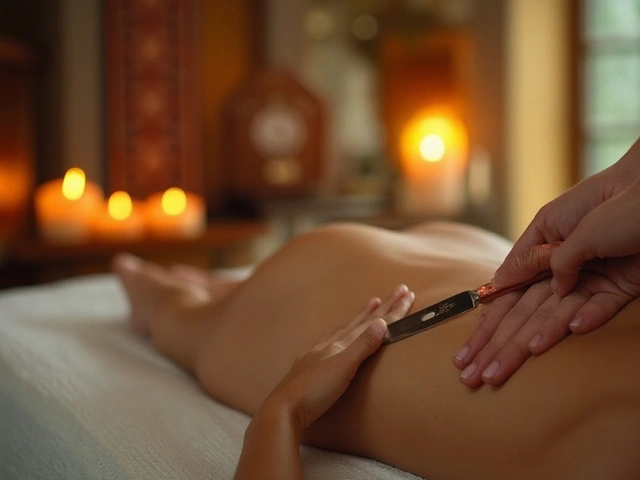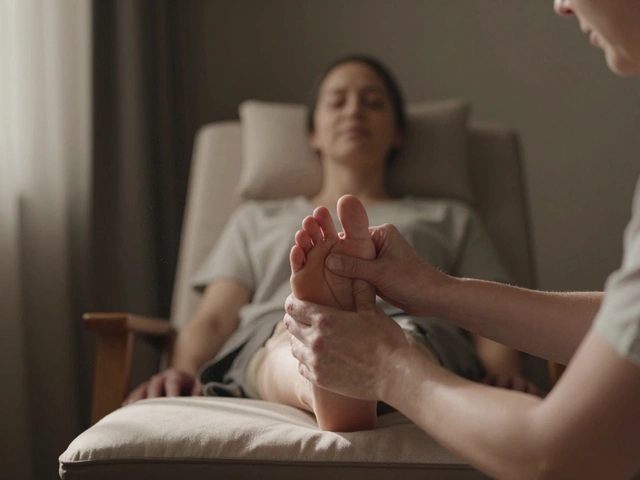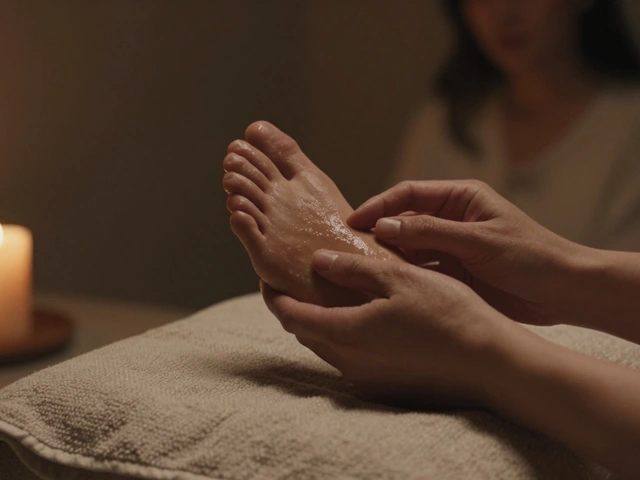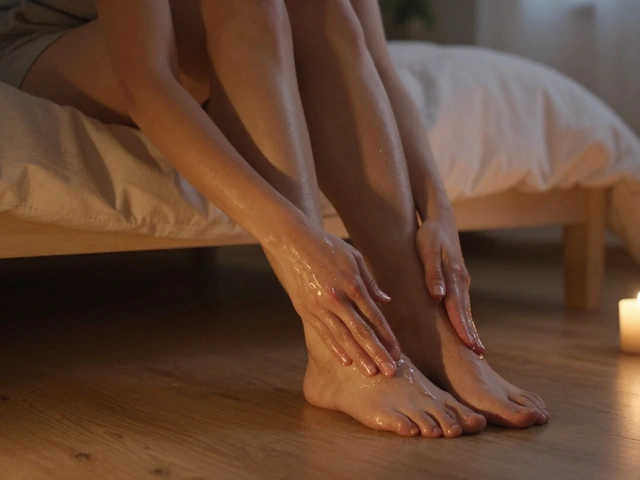Most people don’t even think about their lymphatic system until they start feeling puffy, tired, or just plain off. But that slow-moving network inside you quietly handles waste removal and immune defense all day, every day. And when life throws stress, injury, or surgery your way, your lymph system can get overwhelmed. That’s where lymphatic drainage massage steps in.
This isn’t your regular deep-tissue rubdown. With light pressure and gentle movements, the technique speeds up lymph flow so your body can get rid of unwanted fluid and waste faster. Imagine pressing the fast-forward button on your body’s own clean-up crew. People swear by it for reducing swelling after surgery, bouncing back from tough workouts, and even fighting chronic fatigue.
If you’re curious about real recovery—not just feeling relaxed for an hour—then it’s worth learning how this massage works, why results are more than skin-deep, and how you can get the most out of every session. Spoiler: small tweaks outside of massage matter just as much as the treatment itself. Let’s clear up what’s myth, what’s real, and how to make your next session actually do something for you.
- Lymphatic System 101
- How Lymphatic Drainage Massage Works
- Benefits Beyond Swelling
- Who Needs It Most?
- Tips to Boost Your Results
- What to Expect in a Session
Lymphatic System 101
Think of your lymphatic system as your body’s natural clean-up crew. It runs alongside your blood vessels, quietly picking up extra fluid, dead cells, and even bacteria that shouldn’t be hanging around. The system is a big part of how your immune system keeps you healthy without you even noticing.
Here’s the deal: The lymphatic system moves about 2-3 liters of fluid every single day. That’s a lot, considering most of us don’t even know it’s working until something goes wrong. All that fluid, called lymph, travels through a network of tiny vessels and stops off at hundreds of lymph nodes. These nodes act like security checkpoints, grabbing germs and junk so the rest of your body doesn’t get sick or swollen.
“The lymphatic system is essential for immune function and fluid balance, yet it’s one of the most underappreciated parts of human anatomy.” — Dr. Stanley Rockson, Stanford University School of Medicine
If the lymph system slows down—whether from injury, surgery, or just too much sitting—you can get swelling, pain, or slower recovery. And here’s a stat that might surprise you: about 20% of people who’ve had breast cancer surgery get a condition called lymphedema, which is basically swelling because the lymphatic system can’t keep up.
| Key Part | What It Does |
|---|---|
| Lymph Vessels | Carries lymph fluid |
| Lymph Nodes | Filters germs and waste |
| Spleen | Monitors blood, supports immune defense |
| Thymus | Helps develop immune cells |
| Tonsils | Trap germs you breathe or swallow |
If you’ve ever noticed your ankles puff up after a long flight, that’s lymphatic backup. And when your system works well, you barely notice it—which is exactly how it should be. But when it stalls, lymphatic drainage massage steps in to give it a nudge and get things moving again.
How Lymphatic Drainage Massage Works
The secret to lymphatic drainage massage isn’t force—it’s rhythm and direction. Therapists use a light, steady touch that mimics how your lymph moves naturally. The strokes aren’t random; they follow the path of your lymph vessels, nudging fluid toward your lymph nodes, where your body takes care of filtering out waste.
Lymphatic fluid isn’t pumped by your heart like blood, so it needs a little help, especially after surgery or injury. This massage gives that gentle push. Most sessions start at the collarbone and neck area, because that’s where lymph collects before joining your blood flow. From there, the therapist works outwards, always following the map of your body’s major lymph vessels.
If you’re picturing deep kneading or painful pressure, forget it. Lymphatic drainage uses about the same amount of pressure you’d use to move a piece of paper on a table—light but targeted. That way, it supports the delicate vessels just under your skin. Too much force can actually squash these vessels and slow everything down.
One cool fact: studies from reliable sources like the Cleveland Clinic show that this technique can reduce swelling (edema) and improve healing post-surgery. People often report less pain and a quicker bounce-back. The lymphatic drainage massage isn’t just some spa gimmick; it’s a method developed by doctors in the 1930s and used in hospitals today for helping people recover faster.
What actually happens during the session? Here’s what to expect:
- First, short, gentle strokes near the neck and collarbone to “clear” the area.
- Next, the therapist moves to other parts of the body, always working from areas closest to the lymph nodes and outward.
- No oils or lotions are usually used (they’re not needed for this type of movement).
- You stay relaxed and comfortable the whole time, often lying on your back.
When done right, you might feel lighter or notice less puffiness the same day. The effect is even stronger if you drink water afterwards, helping your kidneys flush out what your lymph just moved along.
Benefits Beyond Swelling
People usually connect lymphatic drainage massage to fighting swelling or lymphedema. But the perks go way further than just shrinking puffiness. When you get your lymph moving faster, your body naturally kicks up its detox game. That means less waste hanging around in your tissues, which can leave you with more energy and clearer skin.
Folks dealing with post-exercise soreness or muscle fatigue notice they bounce back quicker after this type of massage. It’s not magic—it’s because lymph helps pull out the junk like lactic acid and cell waste, which tend to pile up after tough workouts or injury. Some doctors suggest adding these massages to recovery routines after surgery or intense physical therapy for this exact reason.
If you often feel sluggish, there’s real science explaining why this massage might help. Studies show lymphatic drainage can slightly increase white blood cell levels, giving your immune system a little nudge. Athletes and people with autoimmune problems sometimes report fewer aches and faster healing between flare-ups.
- Boosts immune function: By helping the lymphatic system filter pathogens.
- Promotes healing: Speeds up the removal of cell debris after injury or surgery.
- Reduces water retention: Not just swelling, but that heavy, bloated feeling.
- Improves sleep: A relaxed nervous system and less inflammation mean deeper rest.
Need numbers? A small clinical study in 2023 found that people with chronic swelling saw a 20-30% faster reduction in fluid after adding regular sessions to their routine. Another study on post-surgical patients showed less pain and a lower need for medication in the first week when combined with standard care. Here’s what that looks like:
| Group | Fluid Reduction | Pain Level (1-10) | Medication Use (Days) |
|---|---|---|---|
| Standard Care | 12% | 6 | 7 |
| Plus Lymphatic Massage | 27% | 4 | 4 |
If you’re dealing with stress, some people even find their anxiety levels chill out after a session. It's not only about what happens on the table—it's about giving your body a real shot at bouncing back, not just patching it up for the short term.

Who Needs It Most?
If you're thinking lymphatic drainage massage is just for people who love spa days, think again. Actually, certain groups benefit way more from this than your average healthy adult. And it's not just about feeling relaxed—it's real recovery, backed by solid reasons.
First up, anyone dealing with post-surgery swelling is a prime candidate. After surgeries—especially cosmetic ones like liposuction or facelifts—fluid can pool under the skin, causing discomfort and slowing healing. Surgeons often recommend this massage as part of the recovery plan. It's also useful for people who regularly handle intense workouts, athletes, and those with chronic conditions like lymphedema. People going through cancer treatment might be told to try it, especially if lymph nodes were removed. It’s a legit tool for anyone who feels swollen for no clear reason, too.
- lymphatic drainage massage can reduce swelling by up to 40% after surgery according to some hospital aftercare guides.
- Those with autoimmune or inflammatory disorders (like rheumatoid arthritis) often report less discomfort.
- Desk workers, travelers, or anyone sedentary for long periods may notice less puffiness and heaviness in their legs after a session.
- New moms recovering from childbirth, especially C-sections, sometimes use the technique to speed up healing and reduce discomfort.
If you’re curious about who actually gets these treatments, check out this snapshot from a 2023 recovery clinic survey:
| Group | % Regularly Receiving Massage |
|---|---|
| Post-surgery patients | 54% |
| Athletes | 21% |
| People with lymphedema | 13% |
| Chronic pain/fatigue cases | 9% |
| Other (travelers, desk workers, etc.) | 3% |
Bottom line? If you fit into any of these groups—or just feel sluggish, swollen, or uncomfortable—this isn’t a luxury, it’s a practical move. Doctors, physical therapists, and recovery coaches keep coming back to it because the results show up in real life, not just in the treatment room.
Tips to Boost Your Results
If you’re booking a lymphatic drainage massage and expecting magic just from lying on a table, you’re missing half the picture. What you do before and after a session can seriously impact how well and how fast you see results. Let’s dig into some tried-and-tested ways to make every massage count.
First off, drink plenty of water—think one or two extra glasses both before and after your session. The reason? Water helps flush out the junk that your body releases when your lymphatic system gets moving. In fact, a small survey from the Lymphatic Education & Research Network showed that people who hydrated well noticed less swelling and faster bounce-back times after treatments.
Next, don’t plop down on the couch afterward. Gentle movement like walking, light stretching, or even some basic at-home yoga helps your lymph keep flowing.
- Wear loose, comfy clothes to your appointment. Tight stuff slows down lymph flow.
- Avoid big meals and alcohol before your session—your body works better on an empty-ish stomach.
- If you can, squeeze in a warm shower or bath before you go. Heat opens up your capillaries, making it easier for your lymph system to do its thing.
- For ongoing issues (like post-surgery swelling or lymphedema), booking a short series of massages—say once a week for four weeks—often beats just going once and forgetting about it.
- Stay consistent with sessions, especially if you’re recovering from surgery or injury. Frequent, short massages can beat one long session, according to clinical guides published by the Cleveland Clinic.
Here's a quick rundown on what helps you get the most from each lymphatic drainage massage:
| Action | Effect on Recovery |
|---|---|
| Hydrate | Increases flushing of toxins, reduces swelling |
| Move gently post-session | Keeps lymph fluid circulating |
| Warm up before arrival | Opens capillaries for better drainage |
| Go regularly | Builds up faster and longer-lasting results |
"Consistent aftercare is just as important as the massage itself. The more you support your lymphatic system outside the clinic, the greater your results."
— Dr. Dana Piper, Board-Certified Physical Therapist
If you want real change, it's not just about what happens on the massage table. Little habits—hydration, random walks, regular sessions—make all the difference. Try combining a few tips and see how much better you feel after that next session.
What to Expect in a Session
Walking into your first lymphatic drainage massage might feel a bit mysterious, but it’s way more straightforward than most people think. Right off the bat: this isn’t a deep, kneading massage that leaves you sore. Instead, it uses super light, rhythmic strokes that follow the direction of your lymph flow. You’ll probably stay on a comfy massage table, draped in a blanket or towel for privacy, and your massage therapist will usually focus on the neck, armpits, and groin—these are key entry points for pushing lymph in the right direction.
The whole thing usually takes about 45-60 minutes, depending on the area being treated. Some therapists start with a quick chat to see if you’ve had any recent illnesses, injuries, or surgeries, since these can change how—or if—they do the lymphatic drainage massage.
Expect these steps in most sessions:
- Intake: Discuss your health, recent surgeries or injuries, and your goals for the session.
- Preparation: You’ll be asked to remove clothing only in areas being worked on. It’s usually not a full-body undress unless you want it to be.
- Technique: The therapist uses gentle, sweeping motions toward the heart. It shouldn’t feel painful—if anything, it’s almost feather-light.
- Focus Areas: It’s common for the massage to zone in on swollen areas, post-op zones, or spots where you have fluid build-up.
The biggest surprise is how gentle it is. Don’t be fooled by the light touch. Research and reports show it actually helps kick-start the lymph system, helping people deal with post-surgery swelling, chronic pain, and even sinus congestion. People often say they feel lighter or even need to pee more than usual after—it’s your body getting rid of extra fluid like it should.
| What Happens | Duration | Common Results | How Often? |
|---|---|---|---|
| Light, rhythmic strokes | 45-60 minutes | Reduced swelling, improved circulation | Weekly for best results, or as recommended |
After your session, therapists usually give advice like drinking more water to help your system flush waste out. Some people feel wiped out right after, others leave feeling instantly lighter. Either way, it’s a sign your body’s moving things along.








